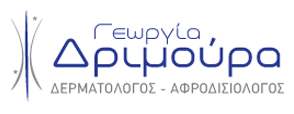Ichthyosis is a hereditary disease its main characteristic being dry and scaly skin (like the scales of fish). It is classified according to the type of heredity. The disease is transmitted through autosomal dominant type of heredity. The patients are of normal physical and mental development. It usually appears during the first year of life and lasts lifelong, often with gradual improvement for common ichthyosis and gender related common ichthyosis. Common ichthyosis is clinically characterized by intense dryness of the skin combined with scales which may be small, thin, flour-like or big, thick and leaf-like. In between scales the skin is thin and forms folds. The secretion of perspiratory and sebum glands is decreased resulting in intolerance during warm and humid days. The rash may be generalized and is usually symmetric. It mainly covers the torso and the expanded surfaces of the limbs. The lack of skin damages on the major joints (elbows, knee and arm cavities) is characteristic of the disease.
More than often, common ichthyosis coexists with atopic dermatitis, allergic rhinitis or asthma. Follicular keratosis commonly coexists while damage of the cornea more rarely appears.
The disease evolves lifelong, without relapses, while gradual improvement may be observed. Softeners are used as symptomatic treatment which decreases dryness of the skin. Keratolytic medication is used in severe cases. The disease lasts lifelong without improvement. During the second to third decade of life, blurring of the cornea may appear. Softening ointments, wet dressings or starch baths are used as symptomatic treatment. The use of oral retinoid medication is also prescribed while keratolytic medication is rarely used.

